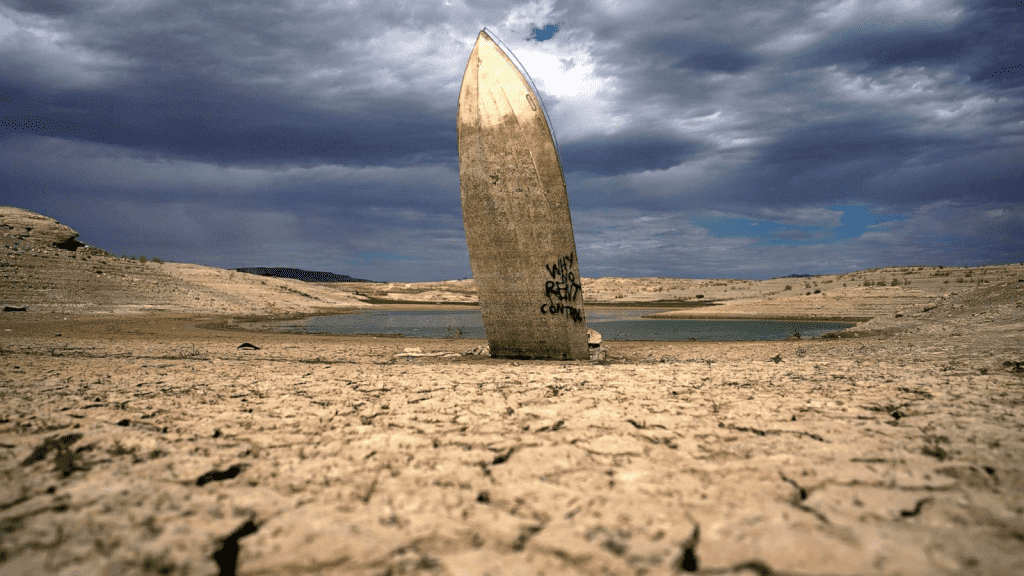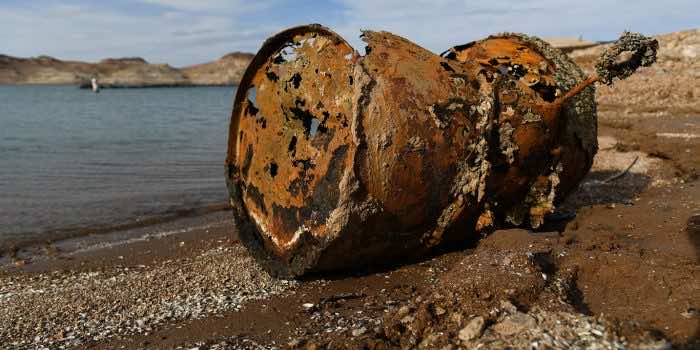For the third time, human remains were found in Nevada’s Lake Mead on 25 July as water levels have reduced to historic lows during a drought caused by climate change.
The remains were spotted by a witness at Swim Beach on Lake Mead during the afternoon of 25 July, the National Park Service announced. Investigators retrieved the remains, the park service said.

In May, boaters at the lake discovered several years old remains of a person who was shot in the head and put into a barrel in the lake. Less than a week later, two sisters paddle-boarding on the lake discovered another set of skeletal remains.
Experts believe that this human-induced climate change warms the planet and intensifies droughts, remnants of the past may continue being unearthed from receding waters.
“I would expect human remains of missing persons will probably be revealed over time, as the water level continues to recede,” Jennifer Byrnes, a forensic anthropologist that consults with the Clark County coroner’s office, told Insider in May.
Eric Bartelink, a forensic anthropologist at California State University’s Chico Human Identification Lab said,
“For us, it’s really just potentially more opportunities to find missing persons and more likelihood that certain cases are going to be discovered,” he said, adding, “It’s just going to reveal more things that were in water that you normally wouldn’t have access to very easily.”
“The largest reservoir in the United States supplies water to millions of people across seven states, tribal lands, and northern Mexico,” the space agency said in a news release earlier this month. “It now also provides a stark illustration of climate change and a long-term drought that may be the worst in the US West in 12 centuries.”

“As the glacier melts and the glacier moves, more material comes up to the surface,” Gregory Berg, the forensic anthropologist who led the team that examined the remains that emerged from the retreating glaciers, told reporters at a 2013 news briefing.
Owing to melting ice, scientists have a narrow window of time to secure these objects before they’re damaged or degraded by weather and exposure to the elements, Taylor wrote in The Conversation in 2021.
Swelling seas can also pose a threat to sacred and culturally significant sites. Ancestral remains in Hawaii, which are traditionally buried along the shore, are being exposed by rising sea levels and beach erosion, Byrnes told Insider.
“Encroaching seas are eroding those burials out and human remains are going to continue to be exposed,” she said in May.


